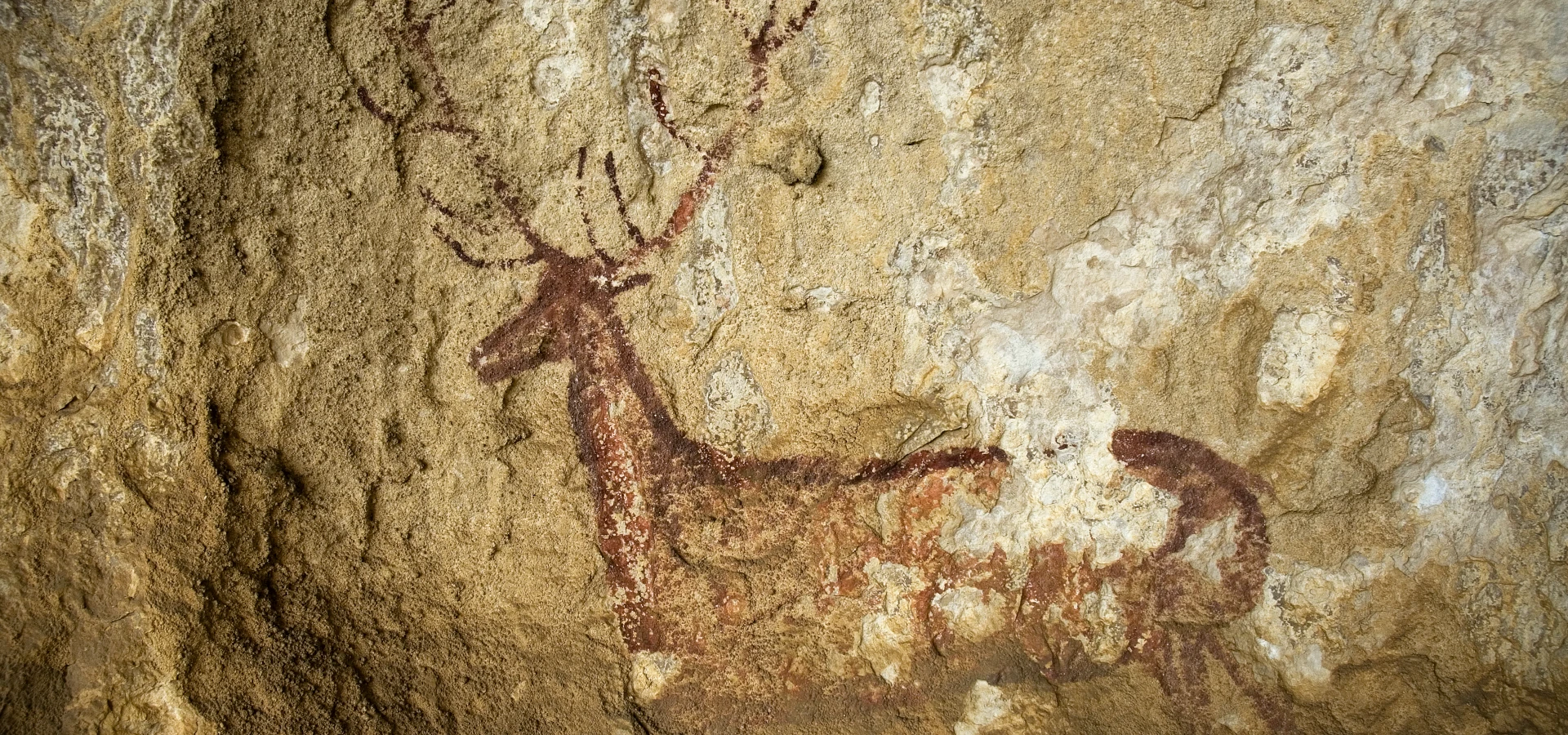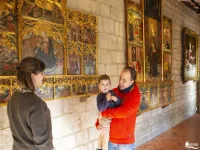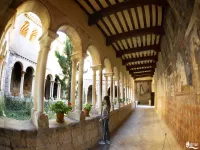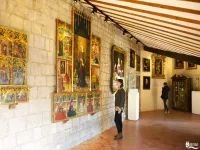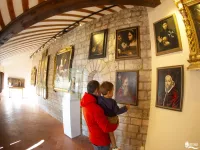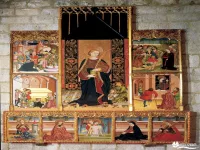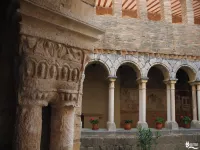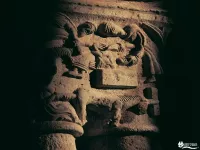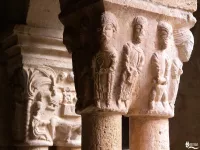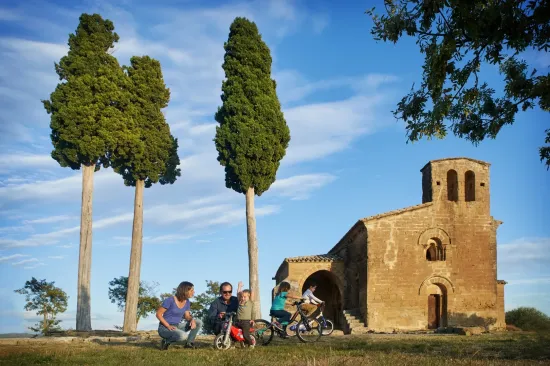It is located in the area where, in the 11th century, Jalaf Ibn Rasid ordered the construction of a fortress in order to stop the advance of the Carolingians, who occupied the county of Sobrarbe. Subsequently it was modified by the Kings of Aragón after the conquest in 1064 of Sancho Ramirez, installing a military garrison and religious community in the first church (1099). The current collegiate church was constructed in the 16th century, retaining the cloister from the 12th century.
The collection is surrounded by a double wall and several towers, one of which is repurposed as a bell tower. The watch tower, constructed in the 11th century, is particularly noteworthy. On the entrance ramp to the the collegiate church, you will find the door to the dungeon of the old castle. Over the door there is a low relief of the Santas Nunilo and Alodio, commemorating where both girls were prisoners. The girls were originated from Adahuesca and were some of the first Mozarabic martyrs (in the year 851).
Part of the Romanesque cloister is preserved, which has a trapezoidal plan in order to adapt to the rocky escarpment on which it was erected. It opens onto side corridors through semicircular arches above twin columns. It features six narrated capitals (first half of the 12th century): the creation of Adam, the temptation of Adam and Eve, Abel decapitated by Cain, the consecration of the church in 1099, the great flood, and the story of Abraham.
The cloister leads onto the chapels of San Antonio, which has ribbed vaulting and stucco decoration, and the chapel of San Fabián. Its walls are decorated with paintings from the 15th through to the 18th century, depicting the infancy and the Passion of Christ.
In the 16th century the old temple was remodeled, with the current one constructed in a gothic style, a work by Juan de Segura. It only has one nave, covered with a star-shaped vault, onto which the chapels were added. In the 17th century the chapel of San Nicostrato was opened, which was carved into the rock in order to house the skull of the roman martyr.
In its interior, noteworthy features include the altarpiece dedicated to the Assumption of the virgin, the chapel of Santo Cristo of Lecina, which is presided over by a wooden carving of the crucifixion of Christ (13th century) and the church organ (12th century).

